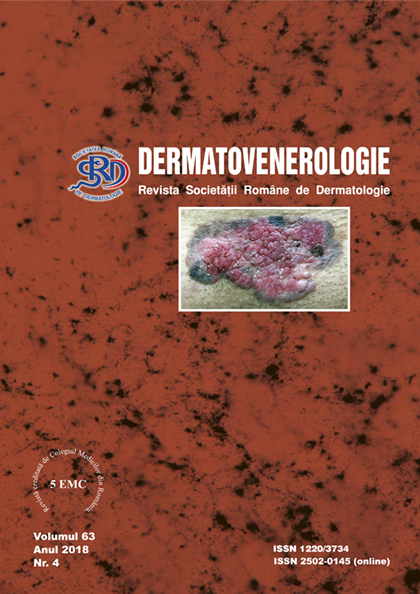Summary
Bowen disease is a specific form of squamous cell
carcinoma in situ with a slow evolution and potentially
invasive evolution. The lesion often occurs in people over 60
who present chronic risk factors such as sun or arsenic
exposure, immunosuppression, HPV infection and, last but
not least, repeated local trauma. There are currently
multiple treatment options, but its choice should be guided
by efficacy, patient compliance, location and lesion size.
We report the case of a 67-year-old male caucasian
patient, who presented for a unique, asymptomatic,
erythematosus patch, with pigmented edges and welldefined
margins, irregular surface, 3.5/8 cm dimension,
located on the hypogastric region, slowly-growing,
evolving for 3-years. Dermoscopy showed point-shaped
vascular structures, brown-blue pigmented areas, brown
globules in the periphery, squamous appearance with
cracked surface and peripheral crust. For the certain
diagnosis a punch biopsy was taken from the periphery of
the lesion, and the histopathological examination confirmed
pigmented Bowen disease. The patient was referred to the
plastic surgery clinic where the excision of the whole lesion
was performed. Localization of the lesion on the lower
abdomen, a sun-protected area, as well as the extensive
tumour size, are the peculiarities of the case. The patient
falls under the 2% cases of pigmented Bowen disease.


